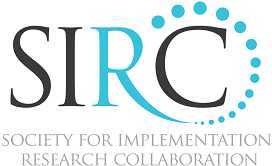Symposium 5 – October 14, 2011 (MC: Meghan Keough)
1. Allegiance and Implementation: Variability in Outcomes across Efficacy Trials
Presentation Slides Video of Presentation
Presenter: Steven D. Hollon, PhD
Author: Steven D. Hollon, Vanderbilt University
Outcomes for the same treatment often vary considerably across different studies. It has long been known that investigator allegiance is a strong predictor of differential response. Such allegiance could reflect the operation of bias (intended or otherwise) with respect to research methods or it could reflect differing levels of competence in implementing the respective interventions. This presentation focuses on the major trials comparing cognitive behavior therapy to medication in the treatment of depression and examines the contribution of differences in the quality of implementation to heterogeneity in outcomes in that literature. Most trials suggest comparability with respect to acute response but some trials indicate the superiority of one approach over the other. In most instances, that variability can be related to differences in investigator competence in implementing the respective interventions. Issues of dosing (with respect to medication) and training and supervision (with respect to cognitive behavioral therapy) are used to highlight these points.
2. The Implementation Research Agenda Regarding Psychotherapy for Depression and Anxiety
Presentation Slides Video of Presentation
Presenter: Greg Simon, MD, MPH
Author: Greg Simon, Group Health Research Institute
This presentation will review practical experience and empirical evidence from efficacy, effectiveness, and health services research to address specific questions regarding implementation of effective psychotherapy for anxiety and depression among adults. Questions will include: What are the important gaps between actual and optimal practice? What are the potential points of leverage or intervention targets? What new methods or tools are necessary? For each of these questions the presentation will consider both “what we know” and “what we think we know that might not be true”.
3. Delivery of Evidence-Based Treatment for Multiple Anxiety Disorders in Primary Care: The CALM Study
Presentation Slides Video of Presentation
Presenter: Peter Roy-Byrne, MD
Authors: Peter Roy-Byrne, University of Washington, Michelle Craske, University of California, Los Angeles, Greer Sullivan, University of Arkansas for Medical Sciences, Cathy Sherbourne, RAND Corporation, and Murray Stein, University of California, San Diego
Improving the quality of mental health care requires continued efforts to move evidence-based treatments of proven efficacy into real-world practice settings with wide variability in patient characteristics and clinician skill. We present the results of a study to examine whether a flexible treatment delivery intervention would be better than usual care (UC) in reducing symptoms of anxiety and in improving functioning, health-related quality of life, and quality of care delivered for the 4 most common anxiety disorders seen in primary care—panic disorder, generalized anxiety disorder, social anxiety disorder, and posttraumatic stress disorder (PTSD). The intervention, Coordinated Anxiety Learning and Management (CALM), allowed choice of cognitive behavioral therapy (CBT), medication, or both; included real-time Web-based outcomes monitoring to optimize treatment decisions; and a computer-assisted program to optimize delivery of CBT by non-expert care managers who also assisted primary care clinicians in promoting adherence and optimizing medications. In this way, CALM sought to accommodate the complexity of real-world clinical settings, while maximizing fidelity to the evidence-base in the context of abroad range of patients, clinicians, practice settings, and payers. The randomized controlled effectiveness trial of CALM compared with usual care took place in 17 primary care clinics in 4 U.S. cities. At 12 months, response and remission rates (CALM vs. UC) were 63.66 percent vs. 44.68 percent, and 51.49 percent vs. 33.28 percent, with a number needed to treat of 5.27 for response and 5.50 for remission. Significant changes also occurred for functional status and quality of life, and were evident for each of the individual anxiety disorders. The flexibility of treatment (e.g., variation in number and type of sessions, and in criteria for continuing further treatment, use of both telephone and in-person contact), the targeting of multiple disorders, and the clinical effectiveness across a range of patients and clinics suggest that the CALM treatment delivery model should be broadly applicable in primary care. Furthermore,, the success of the model tested here demonstrates that addressing multiple common mental disorders in the context of one delivery model is feasible and effective and could serve as a template for the development of unified approaches to management of the multiple psychiatric comorbidities that are the rule rather than the exception in both the general population and in clinical practice.
